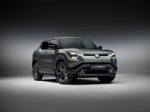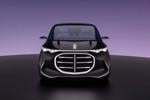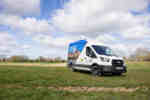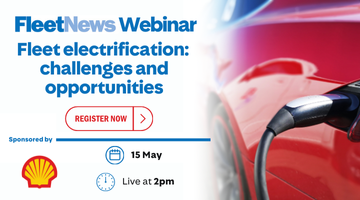The company is launching LPG versions of the Focus and Transit Connect models to fleets to offer an alternative to petrol and diesel in its current line-up.
Although there is uncertainty over the future of fuel duty on LPG, with the Government currently consulting on future policy towards alternative fuels, Ford is making the new Focus LPG a long-term addition to the car line-up.
Kevin Griffin, fleet operations director, said: 'We have been involved in LPG since 2000 with commercial vehicles, but we have been looking for a firm indication that LPG will be a viable alternative.
'Our chairman, Roger Putnam, is in close discussion with the Government on a number of issues, including fuel duty for gas. The indications are that LPG is an acceptable alternative way forward. The distribution of LPG is improving all the time – there are tax incentives and a discount from the London congestion charge, which has come as a bonus.'
Fleets might remember the Focus was offered with an LPG conversion before, but although it was a factory-approved version, Ford decided to drop the vehicle from the line-up after six months because of concerns over quality.
'Our original route was to outsource,' said Griffin, 'but we soon realised we could keep better control of quality by doing more of the conversion in-house.'
Ford's main LPG offering up to now has been with the Transit, and although commercial vehicle operators now have an extra option with the new LPG Transit Connect, Griffin believes the Focus is ideal for introducing the brand to LPG car fleets, and to break down the barrier to fleets that had not previously considered switching to gas.
He said: 'We believe we have produced the right car for the marketplace at the right time. Diesel had problems of acceptability early on, but we saw the direction the market was taking over the last couple of years and invested a lot of money in the latest diesel technology. Diesel is now responsible for 40% of our fleet business.
'With LPG, we are offering an extra alternative for the customer. We have delivered an excellent product but we are waiting for an indication from the Government and the fuel industry that it will be sustainable for the future and viable for customers.'
Griffin said much of Ford's LPG business up to now had been with local authorities, which have made serious attempts to reduce emissions. He maintains that LPG is still the most accessible alternative fuel currently offered.
'We launched the Th!nk electric car in Edinburgh a couple of years ago,' he said, 'which was an interesting alternative for the future, but LPG is an instant alternative.'
The development of Ford's in-house LPG conversions has been helped by Volvo's position within the Ford empire, already offering a range of LPG and compressed natural gas (CNG) models in its line-up.
'There has been best practice shared between us and the rest of the Ford-owned brands, and it's good to be in this position.Our experience in the commercial vehicle sector, where Transit has been available with LPG since 2000, has also helped our development programme with the Focus and Transit Connect.'
Griffin said that a clear commitment from the Government on the future of LPG as a viable alternative fuel for fleets could mean Ford broadening its LPG car range.
Focus performance proves it can hold its own
FORD'S decision to launch its LPG car offering with Britain's best-selling Focus seems sensible. Dynamically, the car is still a class benchmark and its styling, so radical when it was introduced in 1998, has stood the test of time.
The 1.8-litre engine is frisky enough to ensure the slight dent in performance when running on gas is hardly noticeable. As with most LPG conversions, the gas tank sits in the spare wheel well and a tyre inflator kit has been provided as a back-up in case of a puncture.
However, the LPG filler cap is on the opposite side to the petrol cap. If you remember the LPG is on the left (both beginning with the letter L) it shouldn't result in any embarrassing situations at filling stations with trying to stretch the refuelling host to the other side of the car.
The LPG switch is near the handbrake and when it is activated the car runs on gas permanently, with the exception of starting up. When running on LPG a green light illuminates in the instrument binnacle (along with an arrow reminding the driver which side to refuel) and from then on it feels very much like driving a 1.8-litre Focus.
Straight-line performance is more than adequate, although you might find you need to hold the car in gear longer when going uphill, while ride and handling are still excellent, coupled with superb steering. The LPG tank does not affect boot space either.
CAP currently estimates the LPG Focus as being five percentage points lower in residual value terms than the petrol version, retaining 24% after three years/60,000 miles instead of 29%. But this is perhaps indicative of the uncertainty over the future of fuel duty on LPG, and the fact that there are two excellent diesels in the range.
Fact File
Model: Ford Focus 1.8 LPG 5dr
Engine (cc): 1,796
Max power (bhp/rpm): 115/4,400
Max torque (lb-ft/rpm): 114/4,400
Max speed (mph petrol): 123
0-62mph (sec petrol): 10.3
Fuel consumption (mpg petrol/gas): 37.2/26.9
CO2 emissions (g/km gas): 168
Fuel tank capacity (litres petrol/gas): 55/45
Service interval (miles): 12,500
On sale: Now
Prices (OTR): From £15,000
















Login to comment
Comments
No comments have been made yet.